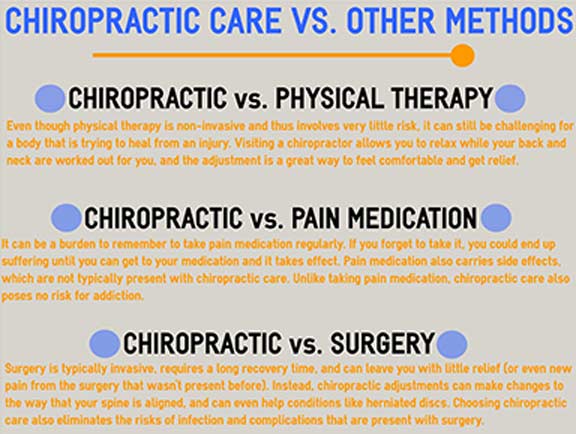Important Daily Behaviors That Can Cause Neck And Back Pain And Exactly How To Avoid Them
Important Daily Behaviors That Can Cause Neck And Back Pain And Exactly How To Avoid Them
Blog Article
Post Produced By-Snyder Glud
Keeping appropriate pose and avoiding common challenges in daily tasks can substantially impact your back health. From exactly how you rest at your workdesk to just how you raise hefty items, small adjustments can make a big distinction. Imagine a day without the nagging back pain that hinders your every action; the solution may be simpler than you believe. By making a few tweaks to your everyday routines, you could be on your way to a pain-free presence.
Poor Position and Sedentary Way Of Life
Poor position and a less active lifestyle are 2 major factors to neck and back pain. When you slouch or inkling over while sitting or standing, you put unnecessary pressure on your back muscles and spinal column. This can lead to muscular tissue inequalities, tension, and at some point, chronic pain in the back. Furthermore, sitting for long periods without breaks or physical activity can damage your back muscular tissues and lead to tightness and discomfort.
To deal with poor pose, make an aware effort to rest and stand straight with your shoulders back and straightened with your ears. Remember to keep your feet level on the ground and avoid crossing your legs for prolonged periods.
Incorporating regular stretching and strengthening workouts right into your daily routine can also aid boost your stance and relieve back pain associated with a sedentary way of life.
Incorrect Lifting Techniques
Inappropriate training techniques can dramatically contribute to neck and back pain and injuries. When you raise hefty objects, remember to bend your knees and utilize your legs to lift, instead of relying on your back muscle mass. Prevent twisting your body while lifting and keep the object close to your body to minimize stress on your back. It's important to preserve a straight back and stay clear of rounding your shoulders while lifting to stop unneeded stress on your spine.
Always assess the weight of the object prior to lifting it. If Recommended Web page 's as well heavy, ask for assistance or usage devices like a dolly or cart to move it securely.
Bear in mind to take breaks throughout lifting tasks to offer your back muscle mass an opportunity to relax and protect against overexertion. By implementing proper lifting techniques, you can stop pain in the back and lower the danger of injuries, ensuring your back remains healthy and solid for the long term.
Lack of Regular Exercise and Stretching
An inactive way of life lacking normal exercise and stretching can dramatically add to back pain and discomfort. When you don't participate in exercise, your muscle mass come to be weak and stringent, resulting in poor position and raised strain on your back. Regular workout helps strengthen the muscular tissues that support your back, improving stability and minimizing the danger of neck and back pain. Including stretching into your regimen can additionally boost flexibility, avoiding stiffness and pain in your back muscles.
To prevent why does my back hurt in the back caused by a lack of workout and stretching, aim for at least 30 minutes of modest physical activity most days of the week. Consist of workouts that target your core muscles, as a strong core can aid alleviate stress on your back.
Additionally, take breaks to extend and move throughout the day, specifically if you have a desk task. Easy stretches like touching your toes or doing shoulder rolls can assist alleviate stress and stop pain in the back. Focusing on routine exercise and stretching can go a long way in keeping a healthy and balanced back and lowering pain.
Conclusion
So, remember to stay up right, lift with your legs, and stay energetic to prevent back pain. By making straightforward modifications to your day-to-day habits, you can avoid the discomfort and limitations that include pain in the back. Look after your spinal column and muscles by exercising good posture, proper lifting strategies, and routine workout. Your back will certainly thank you for it!
